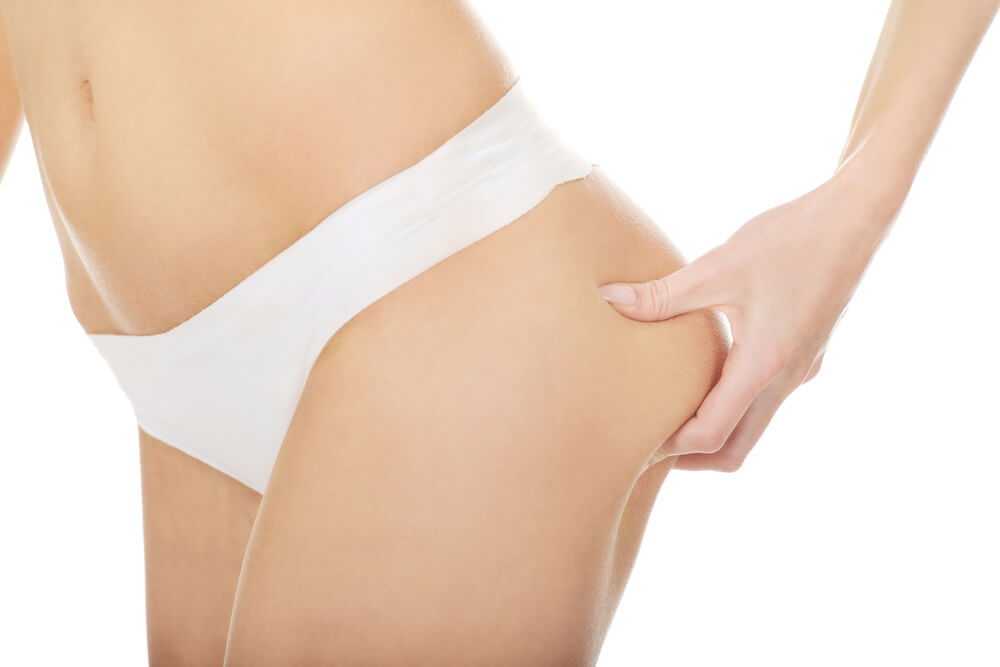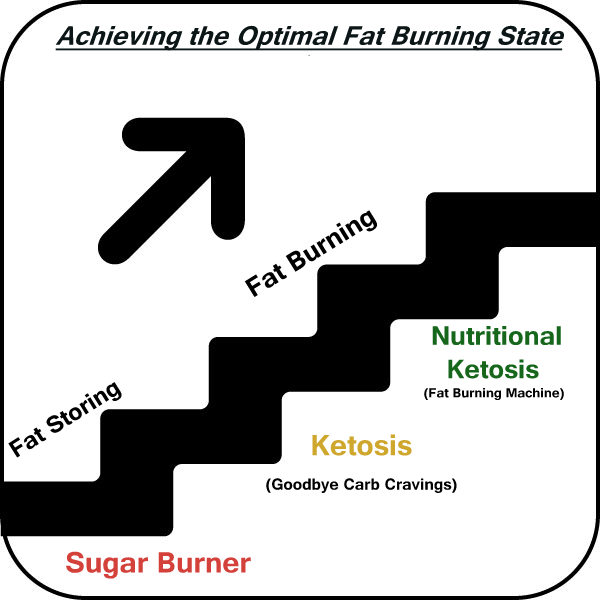
Is it actually possible to program your body to burn more body fat? We explore how to train Your Body To Burn Fat.
One of the most significant processes that occurs during a successful diet plan is triggering the mechanisms in your body to burn fat for energy instead of protein (or muscle). Different forms of eating will produce this effect in different ways. One process which occurs when the body is burning fat is called ketosis. Ketosis is the body’s mechanism for reprogramming your metabolism for energy production.
The human body generates energy from the natural glucose in starches and carbohydrates or from the ketones that are found in fat.
When you limit your intake of any source of nutrition, your body will resort to whatever means necessary to provide fuel. Involuntary mechanisms will switch into “survival” mode, much like our ancestors did when food supplies were limited, and provide your body with alternative sources for energy. The great news is that once you have manipulated your metabolism into recognizing fat as the primary source for fuel, you can burn nearly unlimited amounts of fat without interrupting the process.
Not only will you lose unwanted fat stores on your body, but you are actually providing your body with a healthier source of fuel.
Many of the organs in the body actually perform better when fueled by ketones than by glucose. Fat is also a more concentrated source of energy with over twice the amount of calories than carbs. Carbohydrates also provide a shorter lasting period of energy than fat. This means that you have to eat more, and more often, to achieve the same result. Rather than creating blood sugar volatility via insulin spike, fat keeps your energy levels, focus, and hunger steady.

Your Fat Storage And Insulin
At the most basic level, fat stores are the body’s way of preparing for emergencies. Because fat lasts longer and sustains just as successfully without eating nearly as much, it is more likely to put you into a daily negative energy balance which means faster weight loss.
When your body is successfully generating energy from fat stores, your body is in a state of ketosis.
Since most individuals generally eat a diet that is comprised mainly of carbohydrates, very few regularly experience a state of ketosis. When you fast, for example, for longer than one or two days, your body will begin to rely on your fat stores for energy, allowing you to experience a true state of ketosis. When this happens, it becomes less difficult to fast or eat less carbs because your body has switched into survival mode. Cravings become less intense and the diet becomes much simpler to abide by while you’re burning fat.
In order to achieve this state in a healthy manner, most dietitians will recommend a diet that includes a ratio of high fat to moderate amounts of protein to low carbohydrate intake. Carbs should consist of mainly leafy green vegetables that are low in starch. It may take a few days to notice, but your body will adjust and begin to rely on the fat stores more. You will probably begin to feel like you’re out of energy and even tired. When this begins, your body is making a major metabolism shift – to help you sustain, drink bone broth or fermented beverages such as kombucha tea.
Ketosis Weight Loss And Testing Your Body
To determine if you are in a state of ketosis or not, there are several methods. Blood tests can measure ketone levels accurately and there are newer methods that can even measure ketones in the breath. A breath meter is relatively inexpensive and extremely reliable. Don’t expect to be in a complete state of fat-burning mode for a couple of weeks as your body makes this major adjustment.
For people who have a great amount of fat to burn, this is an excellent way to do it. By burning fat stores, you can eat as much protein as you desire. However, one rule of thumb you should aim for 1-2 palm-sized portions of protein at each meal. This should leave you feeling full and continuing in this state of fat burning. In terms of protein type, the main staple protein in your diet should be meat, and not lean meat. Lean meats lack the necessary hormone regulating cholesterol, yes cholesterol, that you need to burn fat and build muscle. Aim for free-range, grass-fed cuts of meat that are fattier, such as rib-eye steak and chicken thighs with skin.

Ketosis Plan And What To Eat
Most people who lose fat by maintaining a state of ketosis in their body rely heavily on red meat because it tends to provide a feeling of being full for longer periods of time. Not to mention, grass-fed red meat provides a significant amount of fat-soluble vitamins, minerals, enzymes, co-factors, etc – all necessary to get you lean. You can try eating any kind of fresh meat including beef, pork, poultry, bird, fish, and new Zealand lamb. Organ meats such as beef liver are especially rich in nutrients and minerals, but be prepared to marinade them properly as they carry an extremely intense taste! Bacon can be great too, since everything tastes better with bacon, but try to limit bacon consumption since most pork is not prepared properly (soaked in brine).
Bacon can be great too, since everything tastes better with bacon, but try to limit bacon consumption since most pork is not prepared properly (soaked in brine)..
Butter from grass-fed cows is excellent on steamed vegetables. Not only does it enhance the taste (which can become somewhat bland at times) but it aids the body in absorbing the nutrients easily and more efficiently. Some favorite low carb vegetables include sprouts, tomatoes, leafy greens like spinach or lettuces, broccoli, peppers, herbs such as cilantro, basil and parsley (these can really add flavor to any meal), celery, onions (also another big flavor booster), mushrooms, cabbage, avocado, green beans and cucumbers.
Whole eggs and raw dairy are considered superfoods due to their extremely high content of fat-soluble vitamins and minerals. Don’t be concerned about eggs raising your cholesterol – the primary studies linking high cholesterol to heart disease were performed on herbivorous rabbits instead of omnivorous humans. If dairy upsets your stomach, try switching to something fermented like kefir, or cut dairy out altogether until your gut flora and gut wall heal, which could take a few months or longer.
Conclusion
The most important thing to pay attention to is your body. When you begin biohacking your body’s natural metabolic processes, it’s a good idea to check in with your doctor if you start experiencing unfamiliar symptoms. As stated before, expect to feel tired and a little bit lethargic when your body starts to make the change for a day or two. Any other symptoms should be discussed with your doctor. Or, if you have diabetes or any other type of chronic condition, consult with your physician about the safest way for you to undertake this method of weight loss. Becoming adapted to burning fat for fuel is a healthy and efficient biohack for peeling off fat while continuing to build muscle mass.
Once your diet is in check, and you need an adaptive workout program, try the Exerscribe App. It’s like a personal trainer in your pocket that adapts to you with every workout.
Guest Blogger
Kusha Karvandi
Latest posts by Terry M (see all)
- Garage Gyms - Aug 1, 2018
- Kettlebells – Why They Should Be Added To Your Routine. - Jul 24, 2018
- Weight Belts: What Are They Really For? - May 31, 2018











I never actually realised that you might need to train your body to burn fat. The idea never occurred to me and it’s not something that I’ve come across while looking up things online as I work towards losing some of my weight, getting fitter and keeping myself healthy. The explanations of what Ketosis is and how to achieve it were great lots of information and introductions to the ideas for me. The section about what foods are the best for getting your body into this state was extremely informative as well. You have definitely piked my interest with this method of weight loss, and I’m going to do some more research, but I think that it’s something I’ll try out! Thanks for the great info and I’ve bookmarked this page for the future!
I have to say that I really appreciate your diagrams and descriptions of the processes that you include here. Things that seem complex and that I don’t always know a lot about, well, I always come away from your posts feeling very informed and ready to apply this knowledge to my daily life. Your details about what to eat when you’re working on training your body is very detailed, and totally going to be helpful if I decide to try this out. Also, I have a question! You talk about a lot of different diets and fat burning processes here on this blog, and I was wondering which ones you actually use?